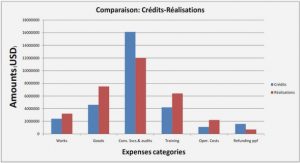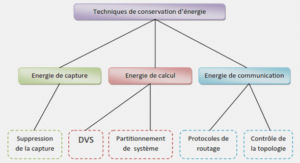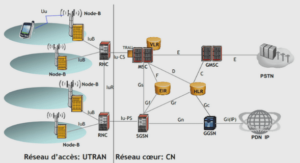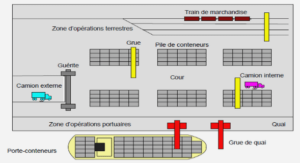Quality control and geometric inspection of mechanical parts
With the developments and improvements in rapid prototyping (RP), rapid tooling (RT), and rapid manufacturing (RM), it is now possible to design and manufacture products with high geometric complexity for application in industries such as aerospace and automotive. Therefore, product geometric inspection has an important role in the quality control of mechanical parts just after manufacturing, which usually consumes a large part of production lead time. Geometric specifications and design of a product are specified regarding functionality by means of Geometric Dimension and Tolerance (GD&T) of a product. The GD&T inspection process is applied to verify the conformity of manufactured parts with the specification defined at the design stage. A reliable, efficient, and automated inspection process will decrease the product life cycle time and cost, improve industrial competition, and increase production efficiency (Gao, Gindy et al. 2006). Although geometric inspection methods and the equipment for rigid parts with regular geometric features have greatly improved and are generally available in the industry (Li and Gu 2005), the geometric inspection of non-rigid parts with free-form surfaces, especially without the use of inspection fixtures, has not been well studied.
Geometrical dimensioning and tolerancing In mechanical engineering applications, free-form surfaces are assigned a profile tolerance to control surface variations (Li and Gu 2005). The surface profile should be controlled based on the principals and methods established in the standards of (ASME-Y14.5 2009) for GD&T (section 8, Tolerance of Profile). To control form or combinations of size, form, orientation, and position of a feature(s) relative to a true (nominal) profile, a tolerance zone is defined by using profile tolerances. This tolerance zone is a volume (3D), extending along the length and width (or circumference) of the regarded feature(s). The profile tolerance zone indicates a uniform or non-uniform tolerance boundary along the true profile within which the surface or its elements must lie. More details on tolerance zone boundaries, profile application, etc. are explained in the section 8, standards of (ASME-Y14.5 2009) for GD&T. Based on the application, the profile tolerance is defined with/without reference to a datum(s), which is called a related/individual profile tolerance (Li and Gu 2005). Regarding this research’s main objective (fixtureless inspection), tolerances will be defined without reference to a datum(s).
Registration (localization) To compare the measurement data (point cloud obtained by a measurement method in the previous section) with the design (nominal, CAD) model for evaluating the deviations (and defects) with respect to the specified tolerance, it is essential to arrange these two surfaces in a common coordinate system. This process is called localization or registration. Traditionally, localization is performed by presenting the part at a favorite position and orientation using special tools, fixtures, etc. for inspection purpose. This kind of process is usually expensive and time-consuming, and needs time and effort to design and manufacture special fixtures. In recent and modern technologies, registration is done by the mathematical determination of a part’s positions and orientations in the design coordinate system (DCS) with respect to the measurement coordinate system (MCS). In application, registration can be done in two steps: finding the point-point corresponding relationship between scanned and nominal surfaces; and, finding an optimal transformation matrix between the DCS and MCS. (Li and Gu 2004), (Abenhaim, Tahan et al. 2011)
Non-rigid (flexible) part, compliance behavior (flexibility) According to the standards of (ASME-Y14.5 2009) and (ISO-1101: 2004), all tolerances are applied in a free-state condition unless otherwise specified. Exemptions to this rule are provided for non-rigid parts in the sections 4.20 and 5.5 of the ASME Y14.5 standard and by the (ISO-10579: 2010) standard. Non-rigid parts are parts which may deform significantly from their defined tolerances due to their weight, flexibility or the release of residual stresses resulting from the manufacturing processes (free-state condition) (ASME-Y14.5 2009, ISO-10579: 2010). The mentioned standards allow for the application of a reasonable force (not exceeding the force excepted under normal assembly conditions) to make a deformation to conform the non-rigid parts within the specified tolerances. Depending on the functionality and design specifications, it may be necessary to assess the part subject to accepted restrained condition instead of, or in addition to, assessing the part in its free-state condition. These standards give rules for dimensioning and tolerancing non-rigid parts where the restraining of features is required during the verification of dimensions and tolerances specified on a drawing.
Case studies, repeatability evaluation, and metrological performance analysis We evaluate our proposed approach on two industrial non-rigid part models (case A and case B) typical in aerospace industries. Parts are illustrated in Figure 3.4. For each model, different virtual parts with different (but known) displacements and deviations (e.g. bumps) are simulated, and their point clouds are extracted. To simulate the parts, we apply two types of displacement: torsional (typical of displacement due to residual stresses) or, flexural (typical of displacement due to gravity). Two types of defect area (small or big) were simulated with different amplitudes (1, 1.5, 2, or 3 mm) on each model (A and B): ASF, AST, ABF, ABT, BSF, BST, BBF, BBT (Case A or B, S: small defects, B: big defect, F: flexural displacement, T: torsional displacement). There is one defect in the cases with big area defects, and there are three or four defects with different amplitudes in the cases with small area defects. The meshing in all the cases is triangular surface mesh with 5mm size. The number of nodes in the CAD model in case B is 9816, and in case A is 29776. Thus, a correspondence search in case C became possible with the modified 64-bit version of the GNIF code in MATLAB®. The automatic node insertion technique and FE solver in the step 4 makes us able to evaluate repeatability and study robustness of the approach.
Gaussian measurement noise ܰ(0, ߪ௦) is introduced three times on each of the above-mentioned cases (24 times for 8 cases) where ߪ௦ = 0.01, 0.02, 0.03 ݉݉ that is a typical value of the measurement noise for a noncontact scanning device. The noises are generated as random numbers from the normal distribution with mean and standard deviation parameters. These random numbers are added to the nodes coordinate of the scanned mesh in the normal direction respect to the mesh surface. Therefore, the proposed approach is totally applied on 32 case studies: 8 original (noise-free) cases, and 24 cases with noise. In each case, the pre-alignment and the rigid registration using the ICP algorithm are performed first. Figure 3.5 shows the simulated parts after this step. Using the modified 64- bit version of the GNIF method, the correspondents between the CAD surface and the rigidly registered surface are identified (Figure 3.6). To compare the capability of corresponding search between the 32b and the 64b versions of the GNIF algorithm, the calculation time for each original case, on a computer with Intel® Core™ i7-3770 at 3.40 GHz processor in 16.0 GB RAM, is mentioned in Table 3.2. The number of correspondence sample points is 1000 in the cases B and 2000 in the cases A. There is an insignificant time difference between the 32b and the 64b versions in the case B which is the smaller case (9816 nodes in the CAD model). The main difference is in the case A (29776 nodes in the CAD model) where the 32b version of the GNIF algorithm is inapplicable for the calculation.
|
Table des matières
INTRODUCTION
CHAPTER 1 REVIEW OF PREVIOUS RESEARCH
CHAPTER 2 FIXTURELESS PROFILE INSPECTION OF NON-RIGID PARTS USING THE NUMERICAL INSPECTION FIXTURE WITH IMPROVED DEFINITION OF DISPLACEMENT BOUNDARY CONDITIONS
2.1 Abstract
2.2 Introduction
2.3 Review of previous research
2.4 Proposed approach
2.4.1 Proposed approach based on the improvement of displacement boundary conditions
2.5 Case studies
2.6 Conclusion
2.7 Acknowledgments
CHAPTER 3 A ROBUST AND AUTOMATED FE-BASED METHOD FOR THE FIXTURELESS DIMENSIONAL INSPECTION OF NON-RIGID PARTS USING AN IMPROVED NUMERICAL INSPECTION FIXTURE
3.1 Abstract
3.2 Introduction
3.3 Review of previous research
3.4 Proposed approach
3.5 Case studies, repeatability evaluation, and metrological performance analysis
3.6 Conclusion
3.7 Acknowledgments
CHAPTER 4 A METHOD FOR DIMENSIONAL METROLOGY OF NON-RIGID PARTS BASED ON ARC LENGTH MEASUREMENT AT FREESTATE CONDITION
4.1 Abstract
4.2 Introduction
4.3 Methodology
4.4 Case studies
4.5 Conclusion
4.6 Acknowledgments
CONCLUSION
RECOMENDATIONS
BIBLIOGRAPHY
![]() Télécharger le rapport complet
Télécharger le rapport complet






